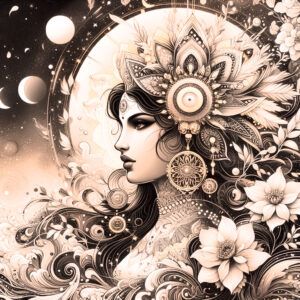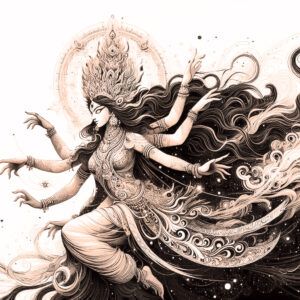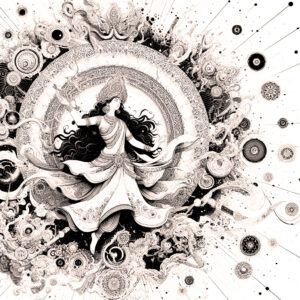
CONCEPT:
Archetype
Pronunciation:
\ˈär-ki-ˌtīp\
Definition:
An archetype is a universal, primal pattern of behavior, symbolism, or character type found in myths, stories, dreams, and across cultures. These patterns are thought to reside in the collective unconscious, a concept introduced by Swiss psychiatrist Carl Jung, representing fundamental human experiences and motivations.
Other Concepts
Deeper Understanding
The term “archetype” finds its roots in ancient Greek, with “archein” meaning “original or old” and “typos” meaning “pattern, model, or type.” Together, they connote an original model or prototype from which others are derived. Archetypes are primordial images and ideas that shape the foundation of human experience and thought. They are considered the building blocks of the collective unconscious—a concept introduced by Carl Jung in his groundbreaking work in the early 20th century.
Jung’s theory of the collective unconscious posits that beyond our individual unconscious lies a deeper layer shared among all humans. This collective unconscious houses the archetypes, which are inherited potentials or forms that become actualized when they enter consciousness through experience. Jung identified several primary archetypes, including but not limited to the Hero, the Shadow, the Wise Old Man/Woman, the Anima/Animus, and the Mother. Each of these archetypes represents different facets of the human experience and personality.
The Hero, for instance, symbolizes the quest for identity and wholeness, often depicted in myths and stories as a character undertaking a significant journey or challenge. The Shadow represents the darker, repressed aspects of oneself that must be acknowledged and integrated for personal growth. The Anima and Animus are the feminine and masculine aspects within each person, essential for achieving psychological balance. The Mother archetype embodies nurturing and creation, reflecting the fundamental human experience of maternal care and protection.
Archetypes extend beyond psychology into literature, mythology, and even marketing. In literature, they help create characters and narratives that resonate on a deep, universal level. Think of the enduring appeal of the Hero’s journey, as popularized by Joseph Campbell, which underpins countless stories from “The Odyssey” to “Star Wars.” In mythology, archetypes manifest as gods, goddesses, and mythic figures who represent universal human concerns and dilemmas.
In marketing, archetypes are leveraged to create brand identities that connect emotionally with consumers. Brands embodying the Hero archetype, for example, inspire courage and achievement, appealing to consumers’ desire for empowerment and transformation.
Despite the widespread application and acceptance of archetypes, Jung’s theory has faced criticism and ongoing debate. Some scholars argue that what Jung identified as universal patterns are, in fact, cultural constructs shaped by specific historical and social contexts. However, emerging research in neuroscience and evolutionary psychology provides some support for the idea that certain patterns of thought and behavior are indeed hardwired into the human brain, suggesting a biological basis for archetypes.
Archetypes remain a powerful tool for understanding the human psyche. They offer a lens through which we can explore and make sense of universal themes in stories, myths, and our own lives. By engaging with archetypes, individuals can achieve deeper self-awareness and personal growth, connect with cultural symbols and rituals, and appreciate the shared human experience that transcends time and geography.
References
Jung, C. G. The Archetypes and the Collective Unconscious. Princeton University Press, 1959.
Campbell, Joseph. The Hero with a Thousand Faces. Princeton University Press, 1949.
Stevens, Anthony. Archetype Revisited: An Updated Natural History of the Self. Routledge, 2003.

